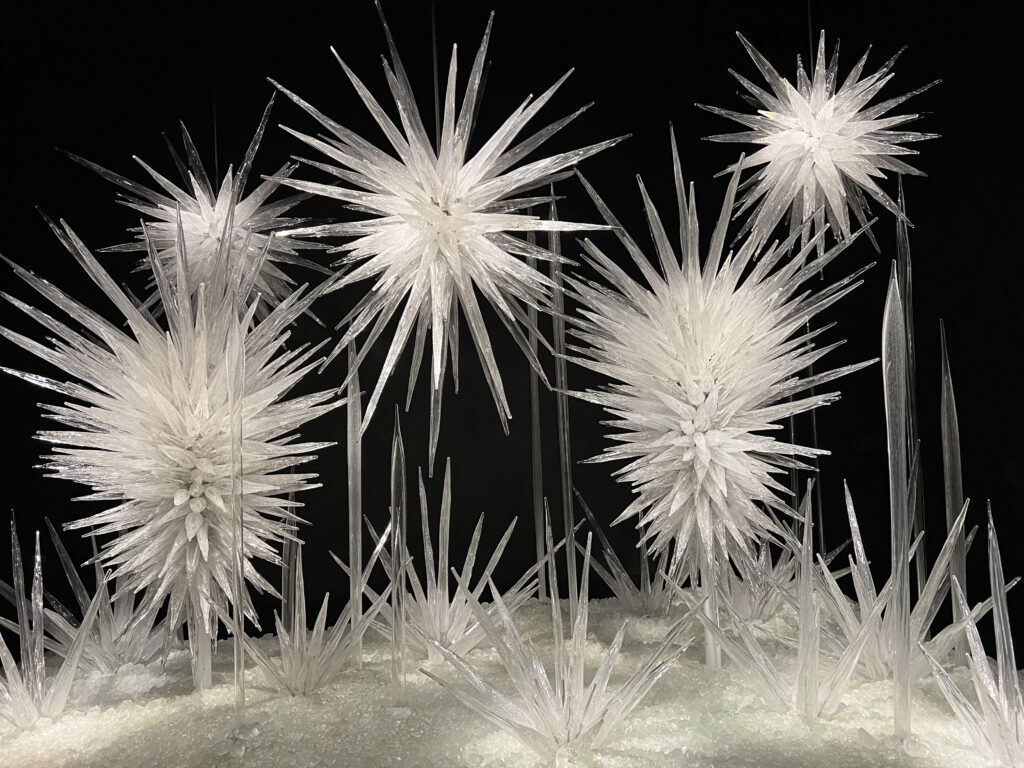
Seattle: Spheres and Glass Sculptures
While in Seattle, we visited the Amazon Spheres. They are actually office space for Amazon employees. We were fortunate they were open to the public on the weekend we were in Seattle. It was difficult to secure a reservation, but persistence paid off!
The Spheres are a result of innovative thinking about the design of workspaces. Researchers working with Amazon found that connecting the environment to nature can increase creativity and brain function. So that is what they set out to do.
The structure is comprised of three inter-connected spheres. Their round shape allows the thousands of plants living inside the Spheres to get light from various angles. There are 2,643 panes of glass making up the Spheres. Crews rappel down the sides of the Spheres to clean portions of the windows every night. It can take several months to finish the job, and then the cycle repeats.
In addition to the Spheres, an “Urban Arboretum” is maintained by Amazon Horticulture. It provides the area outside the Spheres and the surrounding neighborhood with a landscape complimenting the plants living inside the Spheres. The first picture shows the Amazon Spheres. The second picture is part of the Urban Arboretum.
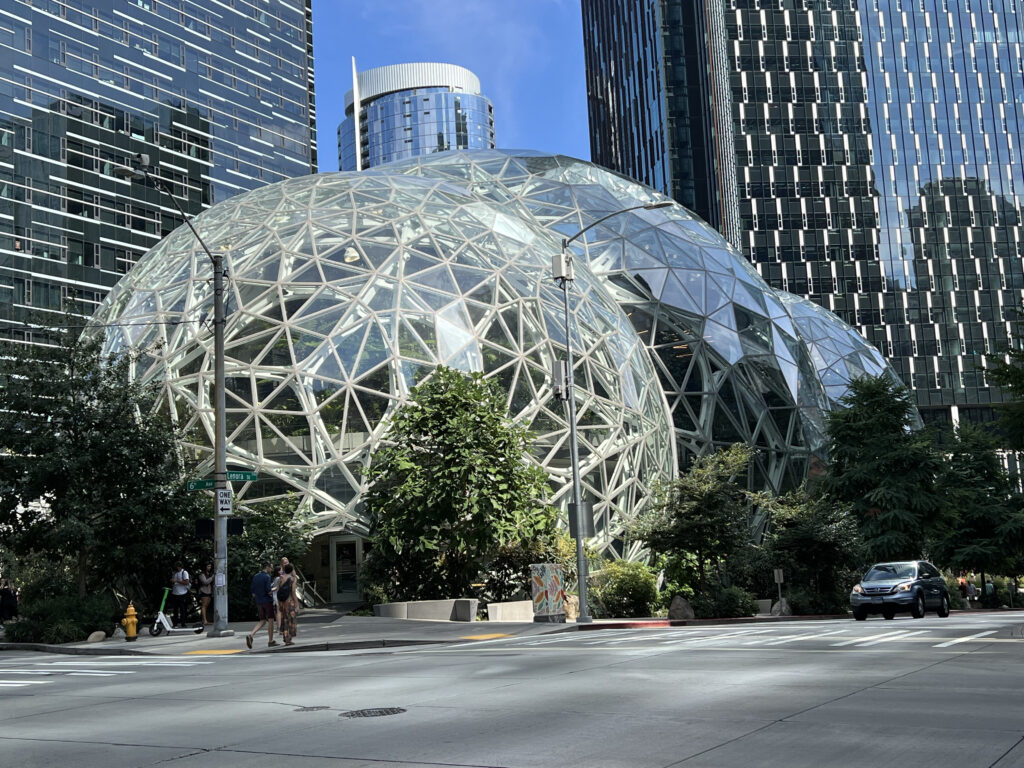
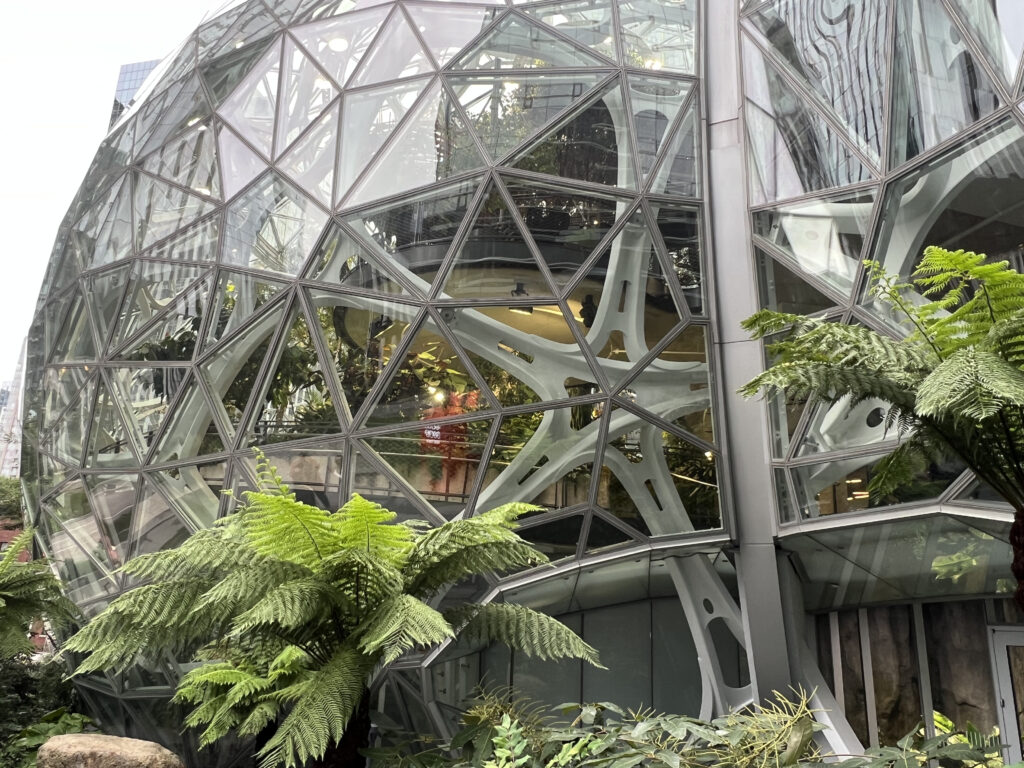
The Spheres are home to more than 40,000 plants representing 1,000 different species. They come from over 30 countries. There are more than 150 lights to ensure the plants get the light they need. Photo-sensitive cells around the building help the lights automatically adjust to the natural light coming into the building.
All of the plants were beautiful, but the last one in this section was especially interesting. It is a carnivorous plant that has modified leaf blades that function as a snap-closing trap and is filled with water and digestive enzymes.
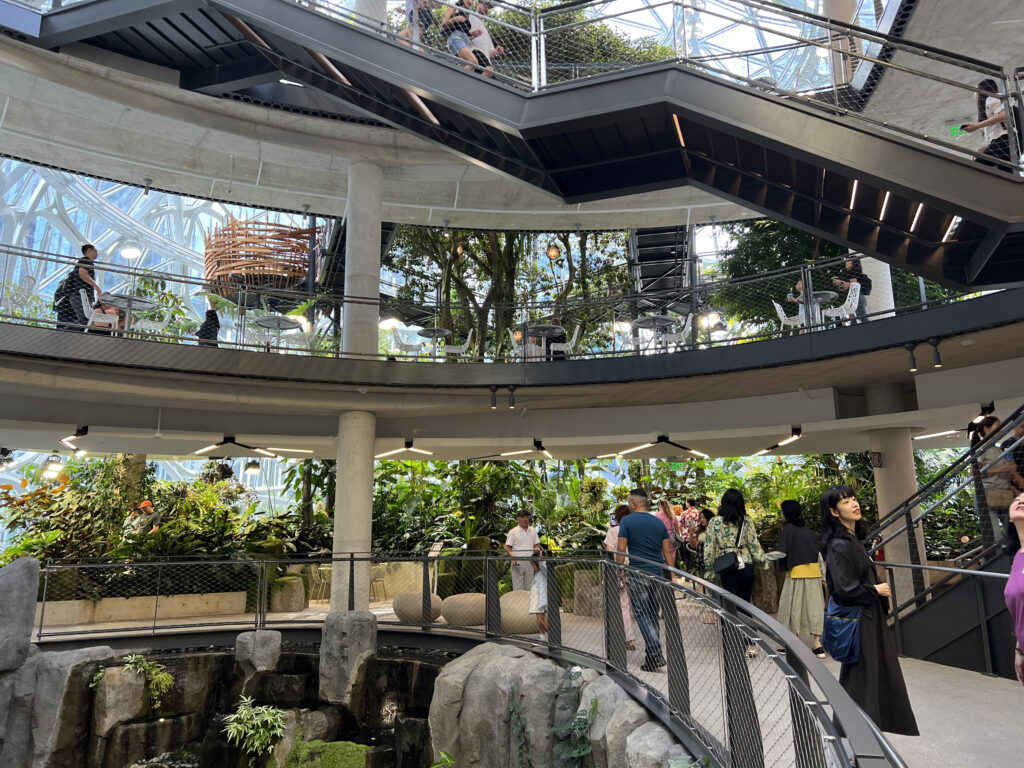
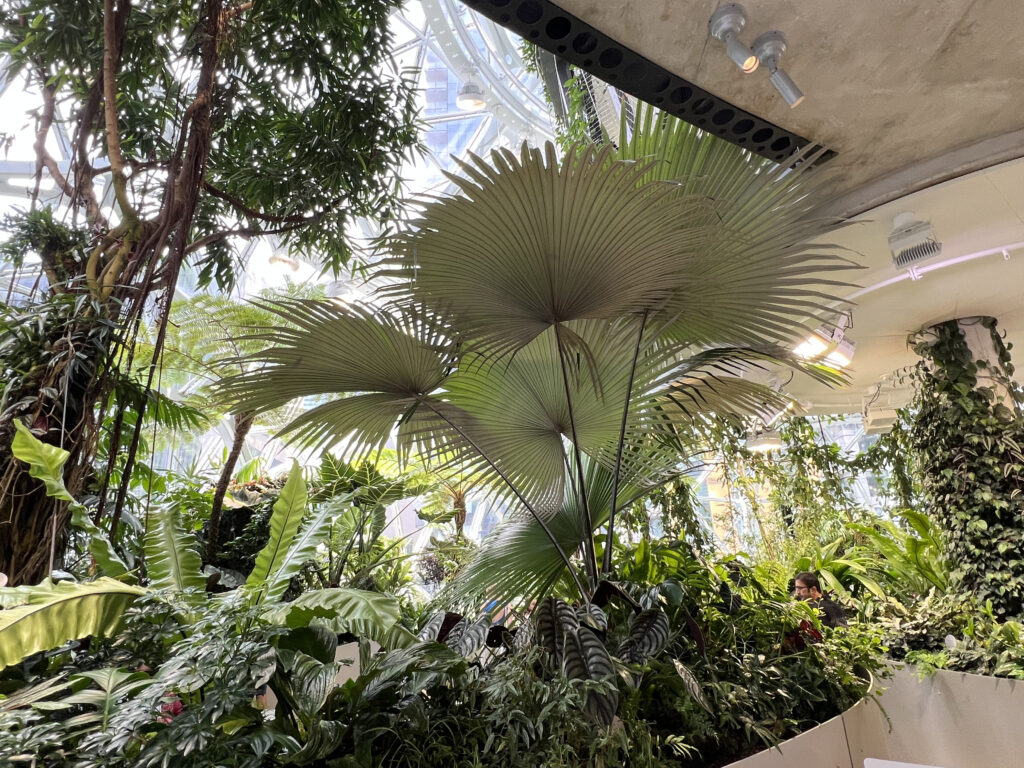
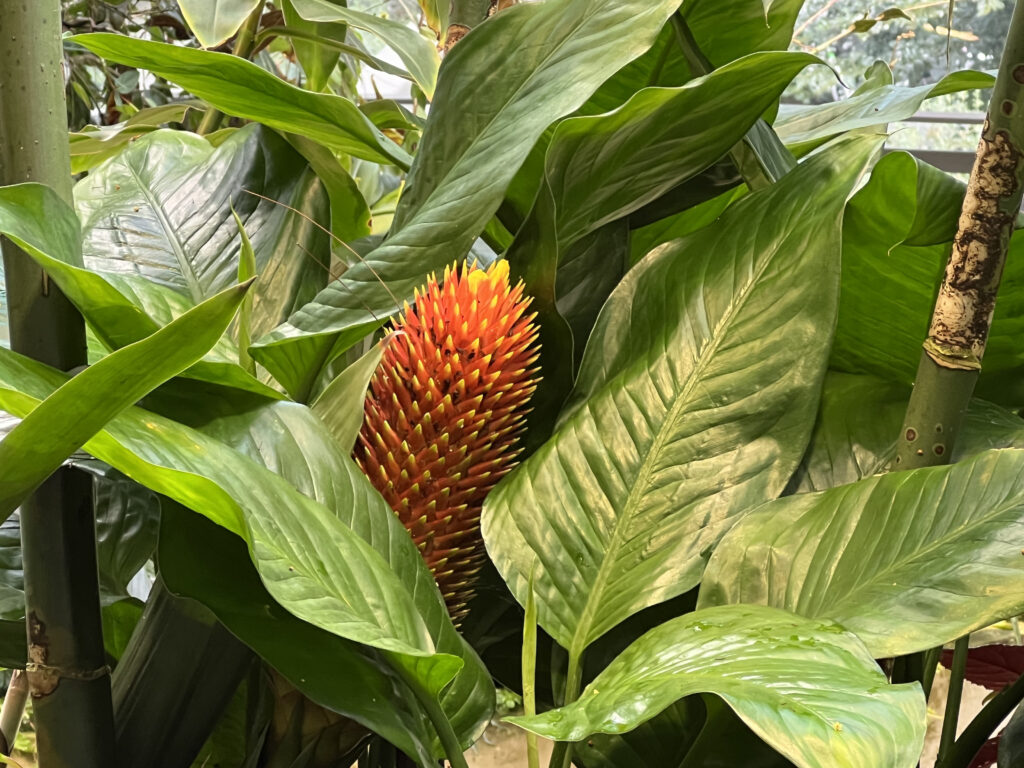
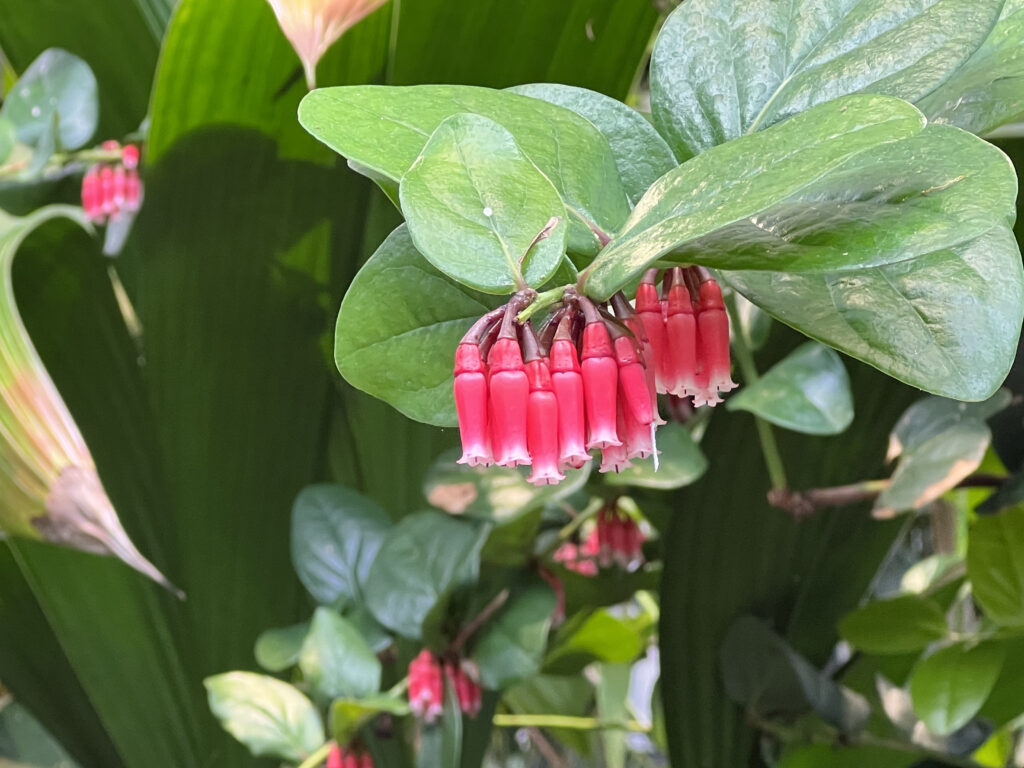
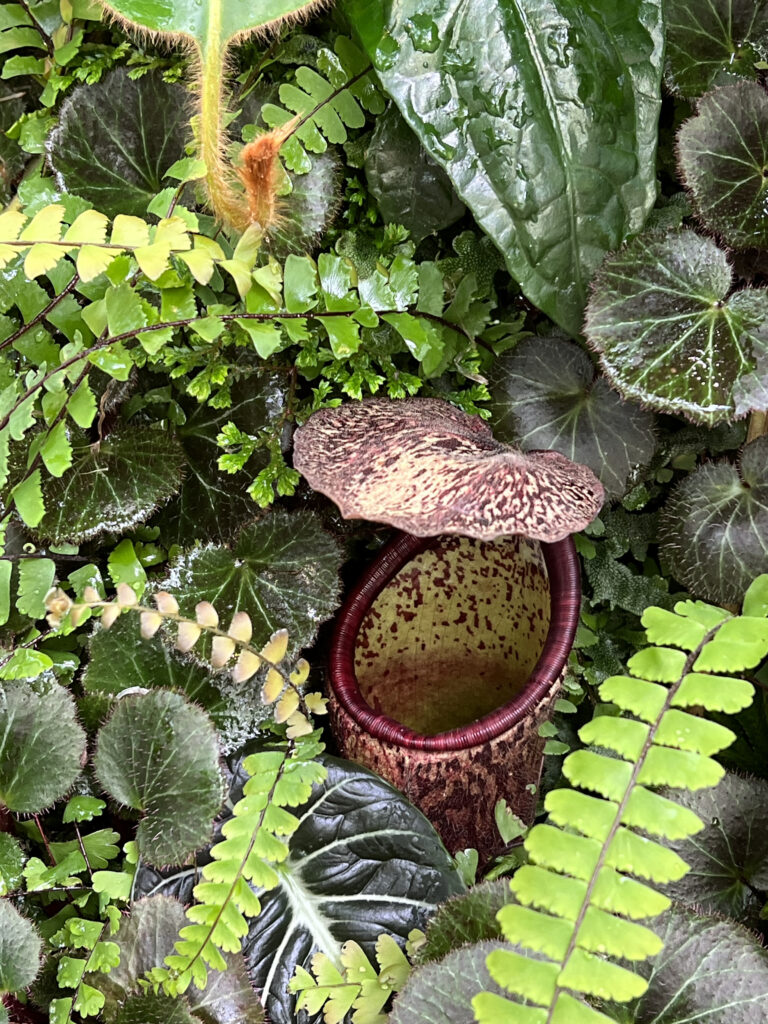
This is a “Living Wall” and is one of the largest in the United States. It is made up of over 25,000 plants representing 200 different species. The Living Wall is over 60 feet tall. In designing the Living Wall, the Horticultural Team applied the concept of vertical stratification. Certain plants will do better at different heights because height is related to light, humidity, temperature and nutrient availability.
An irrigation system operates behind the plants. Water and nutrients are pumped to the top of the wall and slowly move to the bottom, fertilizing and watering plants as it goes. The wall is made of a surface mesh that spreads nutrients to all of the plants. Catch basins collect excess water and recirculate it as the process begins again.
To make the wall, plants were first grown on three-foot-long panels in a greenhouse. When the panels were ready, they were moved to the Spheres and attached to the growing surface. In addition to its beauty, the Living Wall provides other benefits such as cleaning interior airspace and providing natural cooling and insulation.
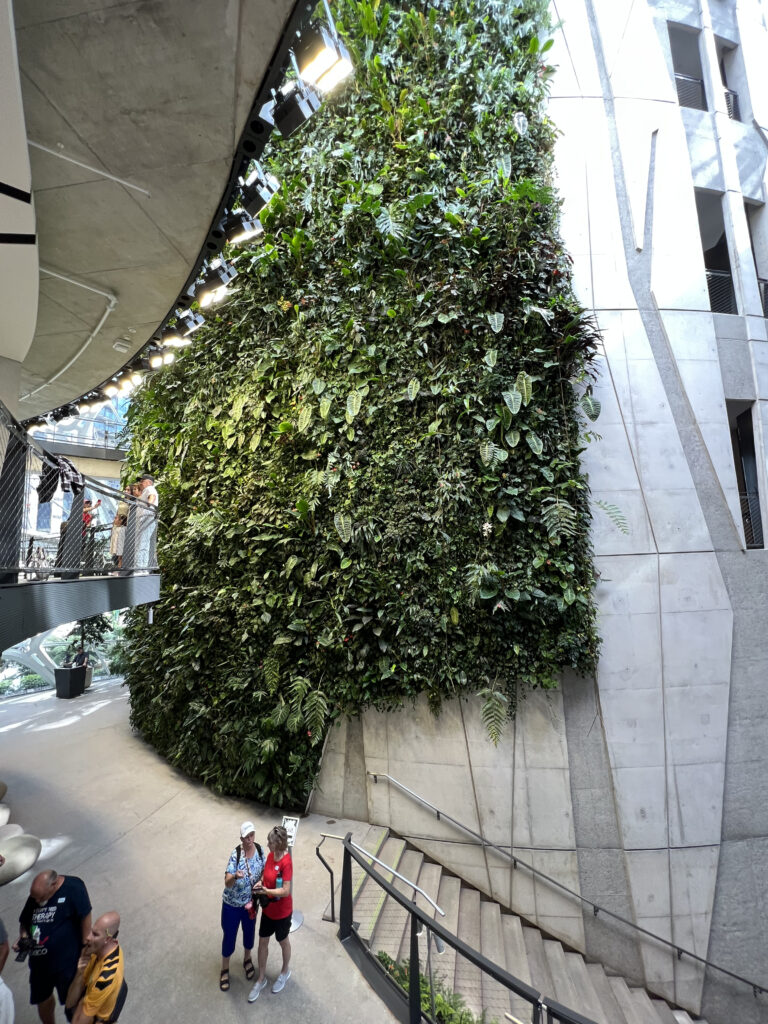
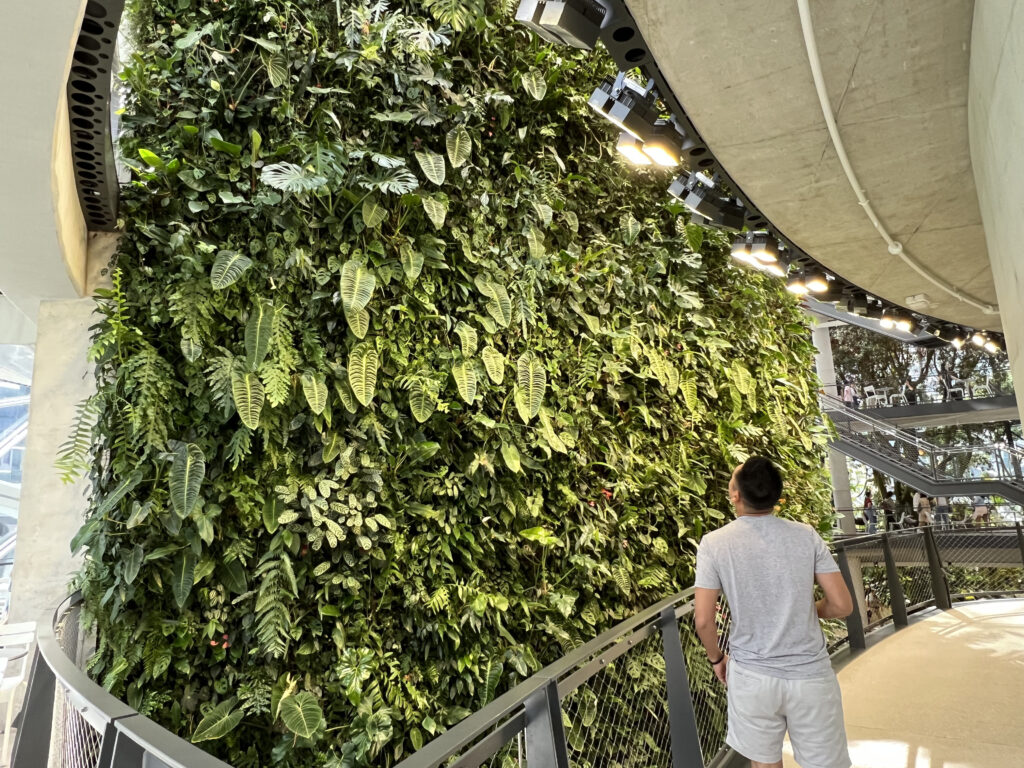
There were paths throughout the Spheres that guided us as we explored. One of the paths, the Canopy Walk, has a place where we could step into a life-size nest called the birdcage. It was an 8×10 space made of locust wood. We enjoyed our visit to the Amazon Spheres and feel like those who have this as their work environment are very lucky!

We also visited Chihuly Garden and Glass. On a very basic level, Dale Chihuly is a glass blower who creates works of art referred to as studio pieces. When we looked at his sculptures, words like innovator, inventor and ingenious come to mind.
For a time, Chihuly studied in Venice. In the United States, glass blowers usually work alone. In Venice, a team approach is more commonly used. Chihuly adopted this concept, establishing a team of artists. This collaboration enabled Chihuly to “push the boundaries” and create larger pieces. Critics say he has “revolutionized the art of blown glass, moving it into the realm of large-scale sculpture.”
We walked into one of eight galleries where we saw this sculpture, Mille Fiori, which is Italian for “thousands of flowers.” Chihuly’s mother’s garden inspired this piece. It is 56 feet long and sits on a reflective surface. It has hundreds of individual pieces, each meticulously detailed, that miraculously come together to create this work of art.
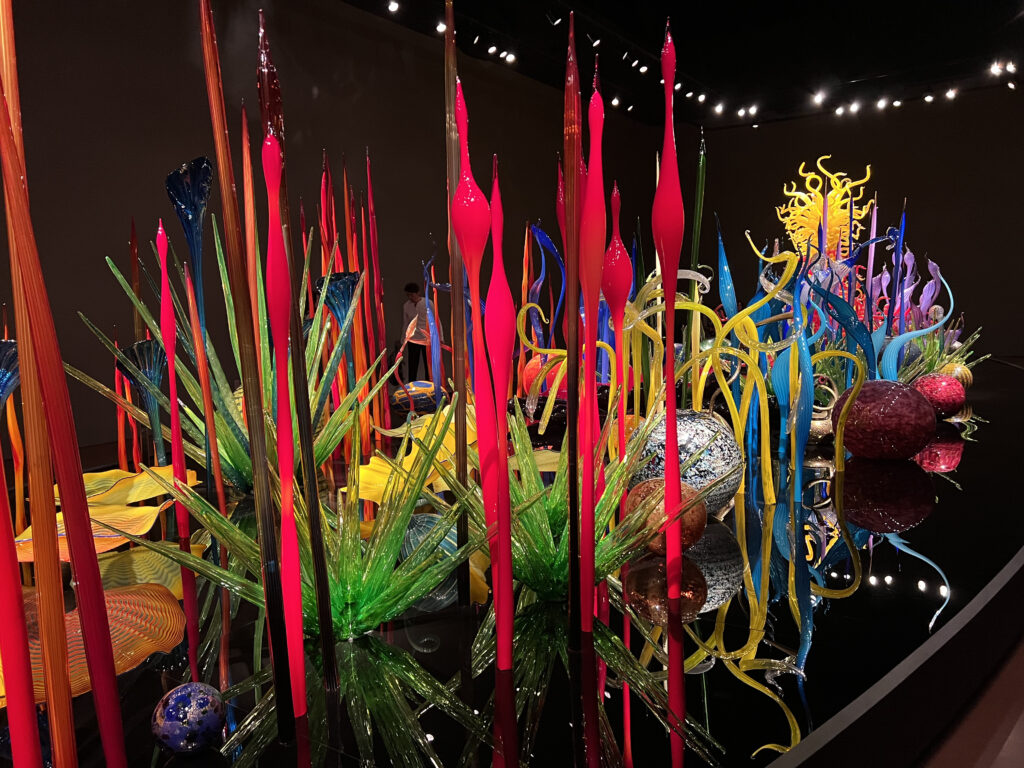
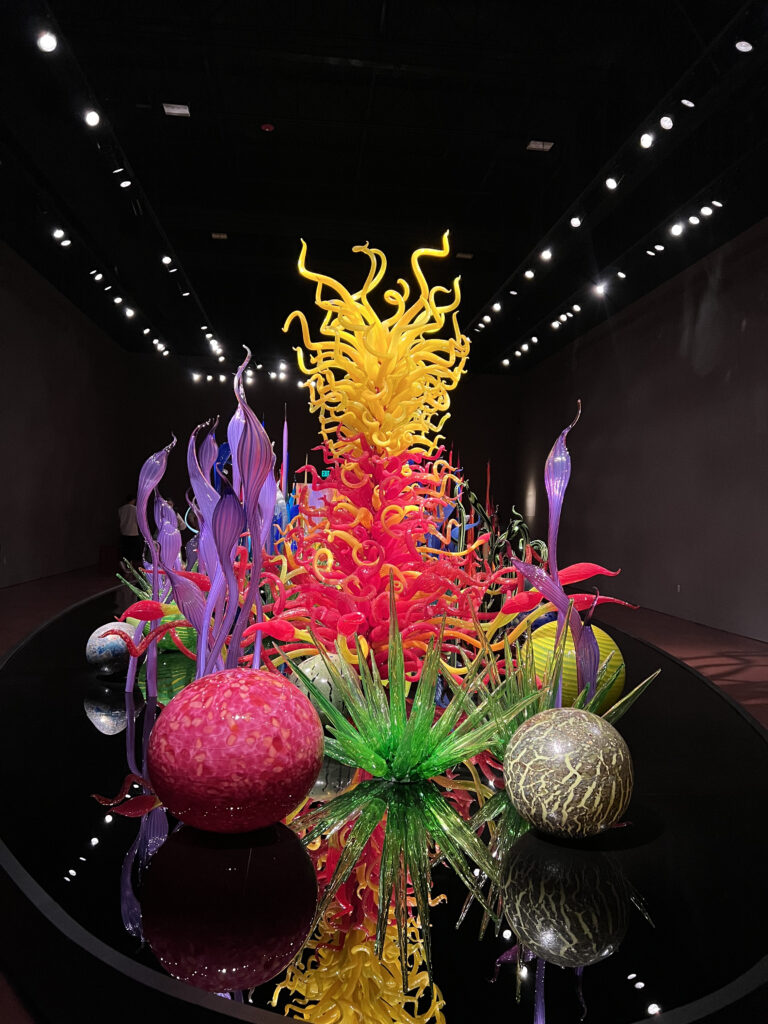
The next sculpture is the Sealife Tower. It dominates the Sea Life Room at 20 feet high. It was inspired by the sea and specifically Puget Sound. Chihuly endeavored to show “sea creatures moving in a glass medium.” The second picture shows the amount of detail Chihuly used when designing this piece.
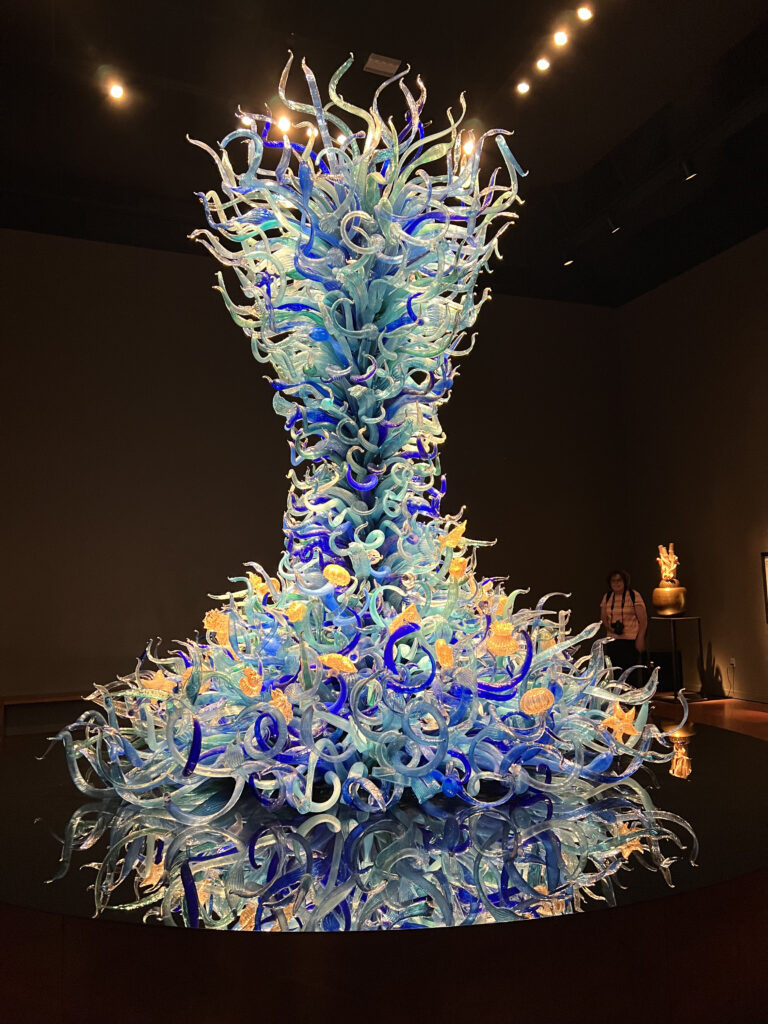

The first picture below is of a sculpture displayed in the Chandelier Room. The room was filled with chandelier sculptures of different sizes and hung at different heights. Each one can weigh up to 1,000 pounds. The room requires a structure that can support the weight of all the chandeliers.
The second picture is of two boats filled with glass baubles. This sculpture has an interesting story. According to a reporter, Chihuly shared that the idea for the piece came to him on a trip to Finland. He was standing on a bridge and dropping glass baubles into a river to see if they would break. There were some teenagers there with their rowboats and he asked them if they would go down river and pick them up. When they came back with their boats full of glass, Chihuly got the idea of exhibiting a boat full of glass ornaments. In fact, of the two boats in the exhibition, one of them is from Finland.

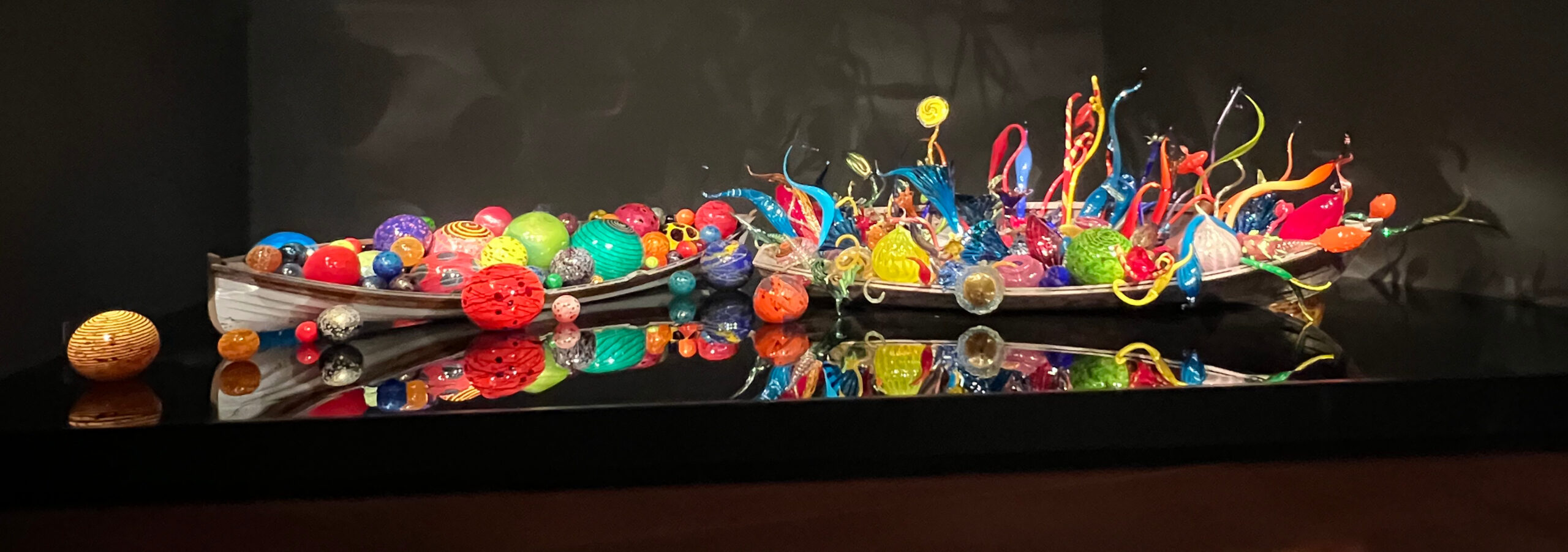
The next picture is “The Persian Ceiling.” It is literally the ceiling in this room. It is lit from above and rests on a piece of clear glass. The colors reflect on the walls and floor. Chihuly felt the interplay of colors and the shapes were important components of this creation. When Chihuly’s studio pieces are finished, his work is not. He has been directly involved in how the art is displayed and lighted.

Pictured below is the Glass House. It is a 40 foot tall glass and steel structure covering 4,500 square feet. Hanging from the top is one of Chihuly’s largest suspended sculptures – it is 100 feet long and is composed of 1,340 individual plates of red, orange, amber and yellow. When we walked into the Glass House, we were just mesmerized. It is a very unique piece housed in a very unique structure.
Just outside is the garden. It is made up of living plants and glass sculptures. The second picture is the “Seattle Sun.” It is a yellow and orange orb of curls and baubles and is 16 feet in diameter. The other is one of several glass creations. The last picture depicts how the glass sculptures integrate with the garden plants. In fact, the plant collection was specially chosen to compliment Chihuly’s art.

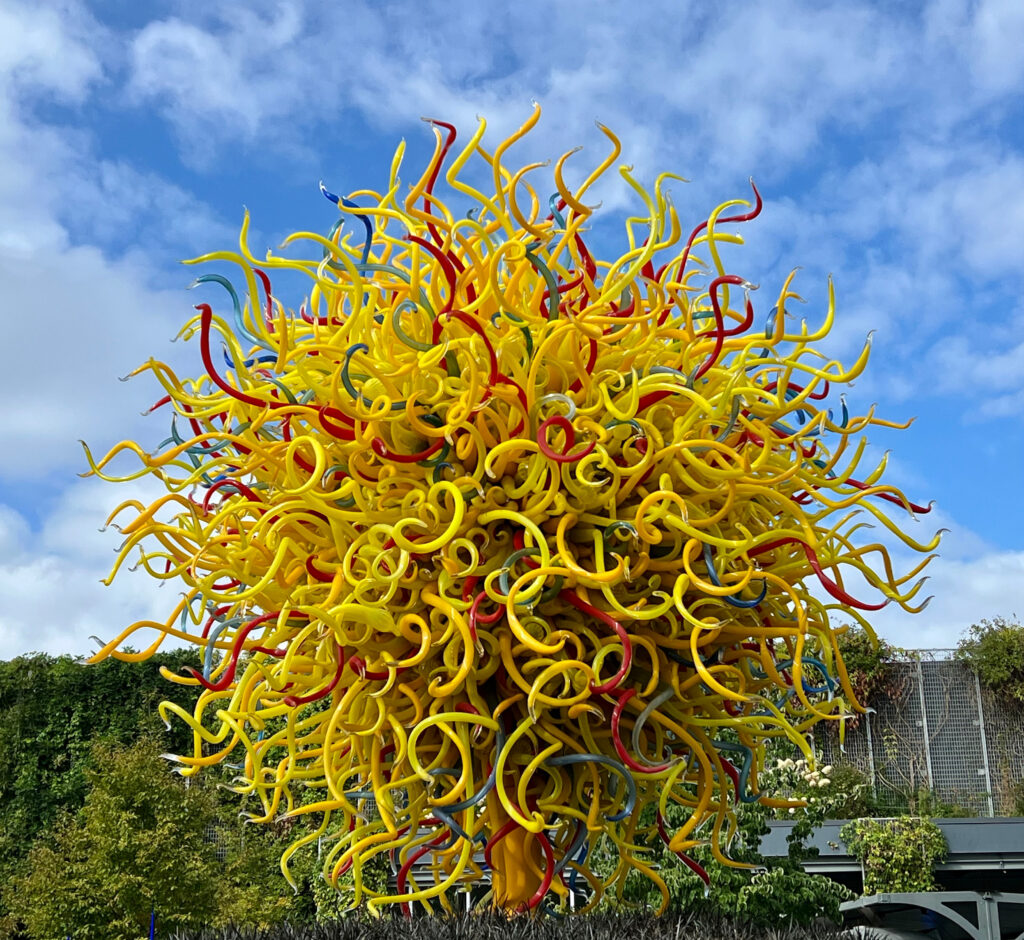
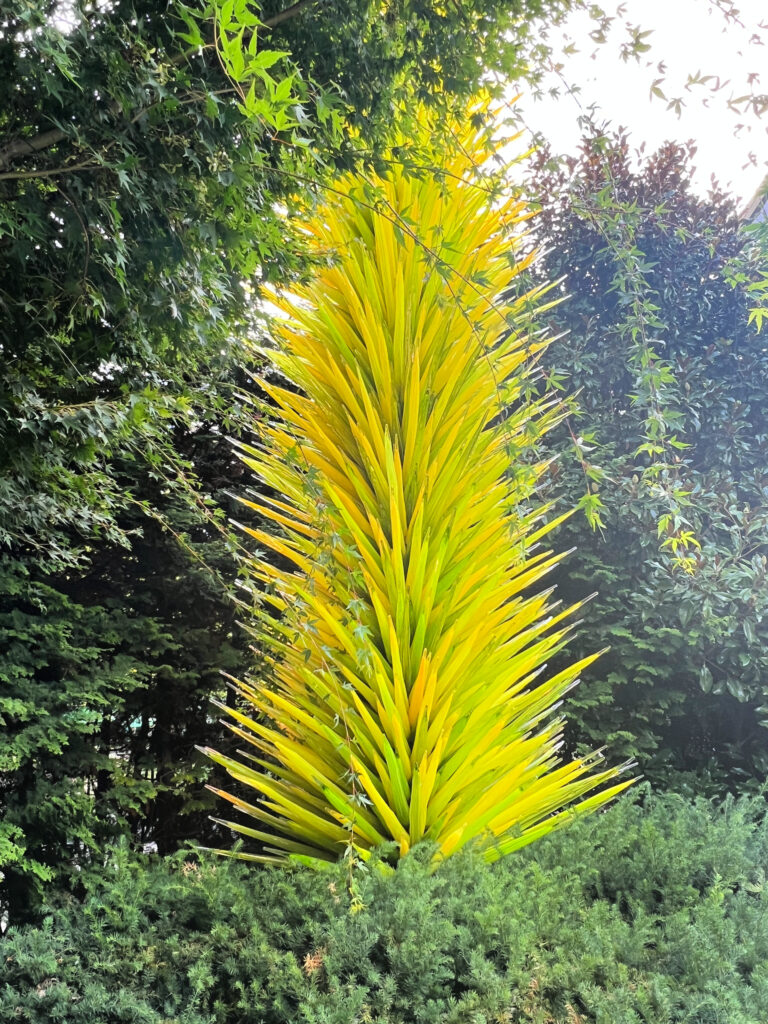
The last picture I have included is actually the first one we saw. Titled Winter Brilliance, it was originally created for a holiday window display. It found its home at Chihuly Garden and Glass in 2021. The beautiful icicle-like sculpture contains approximately 700 hand-blown glass forms. While I hope my photographs gives you a sense of these unique sculptures, I must be honest – you need to really see them in person to truly appreciate their incredible beauty!
